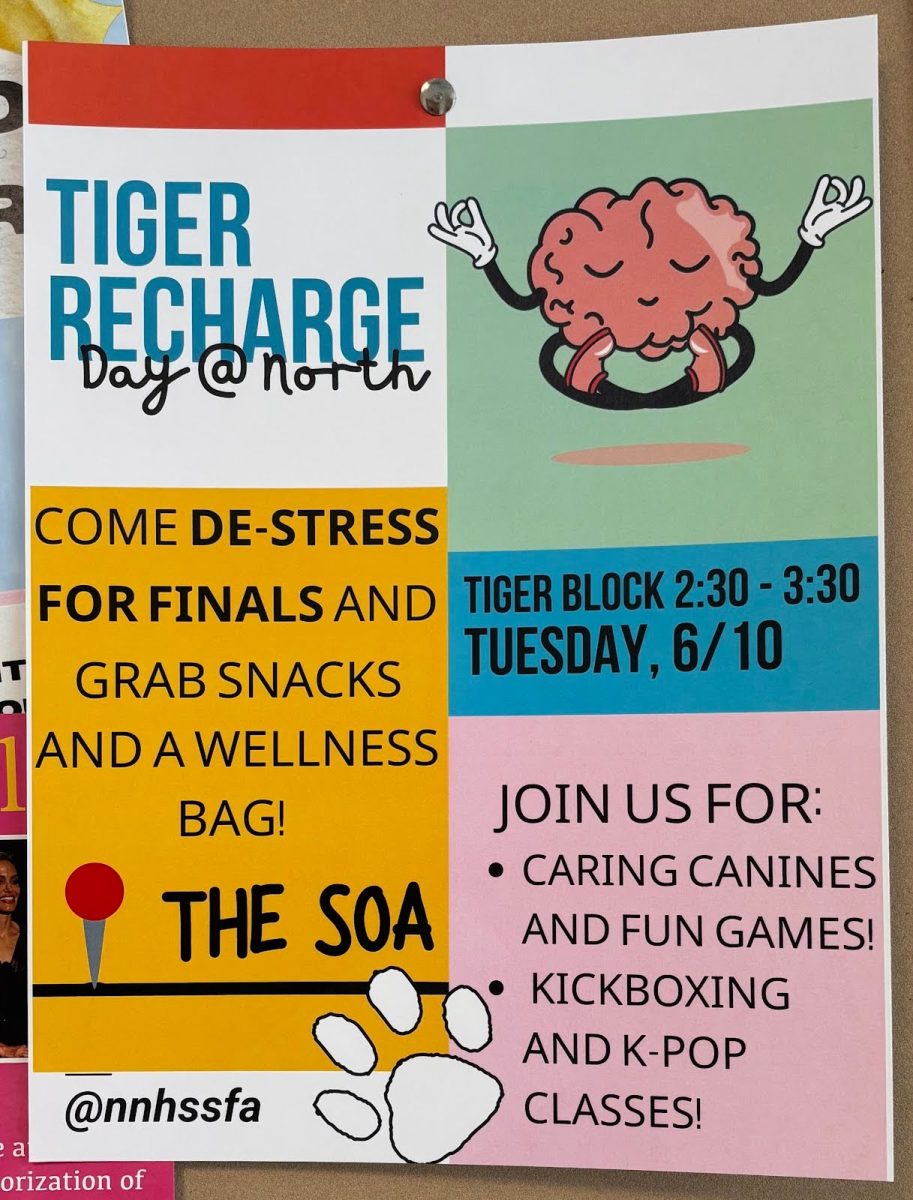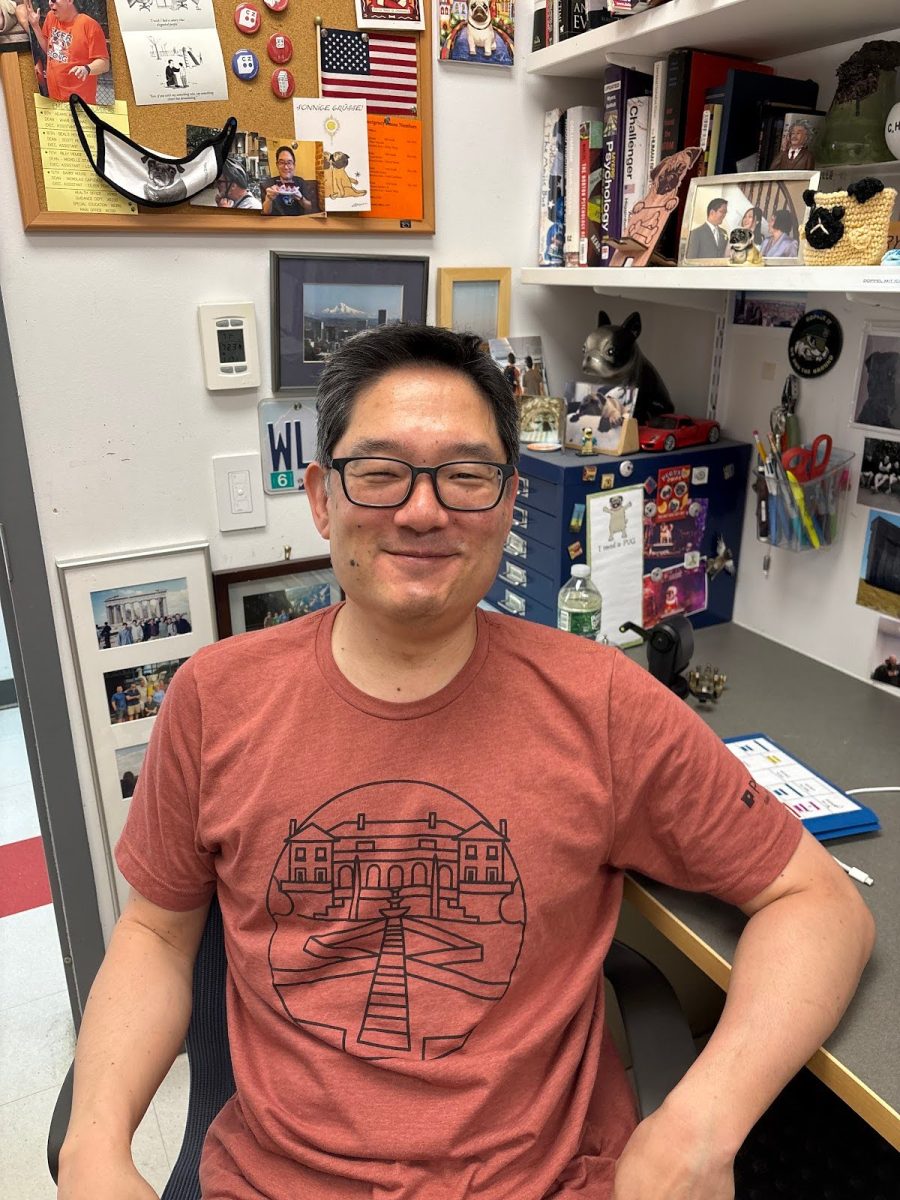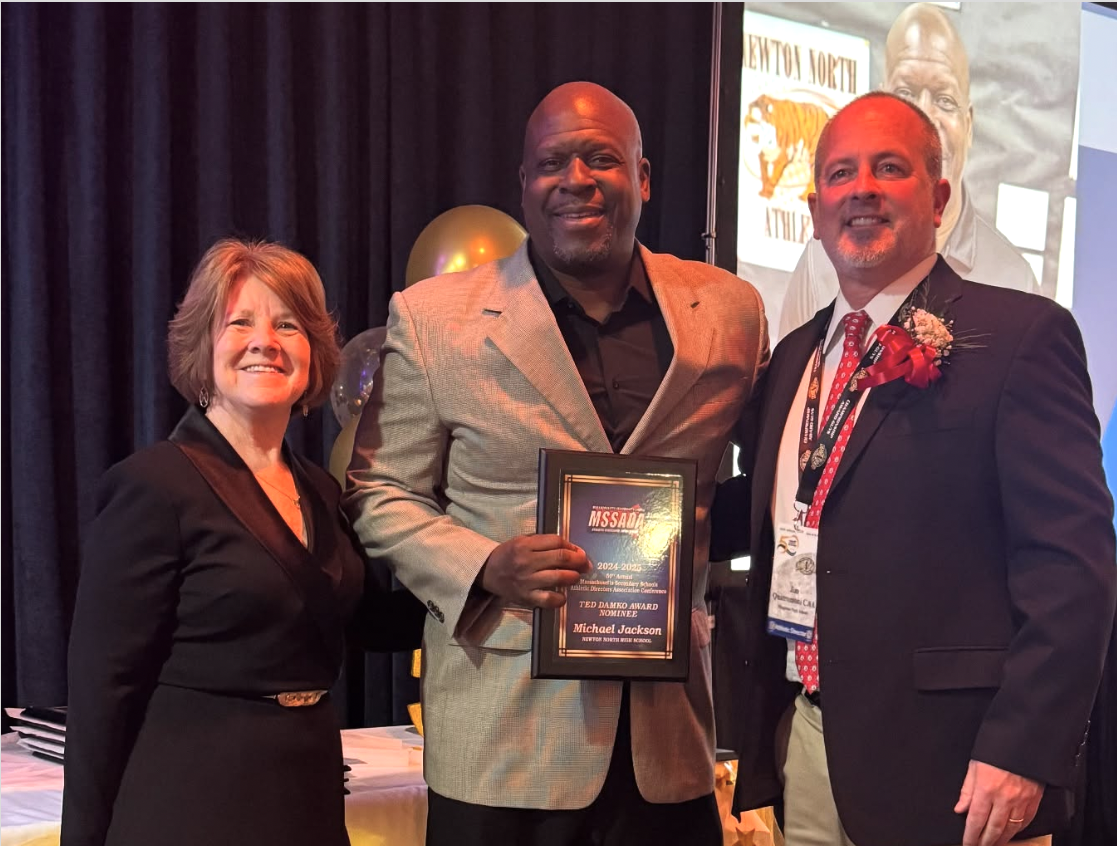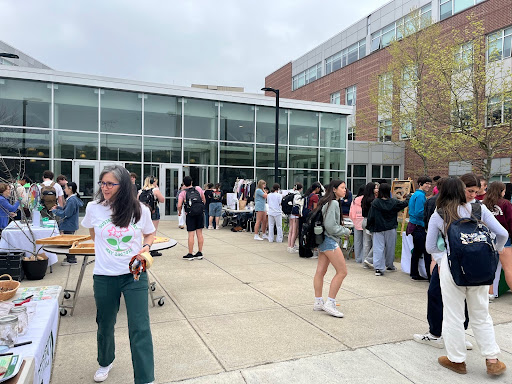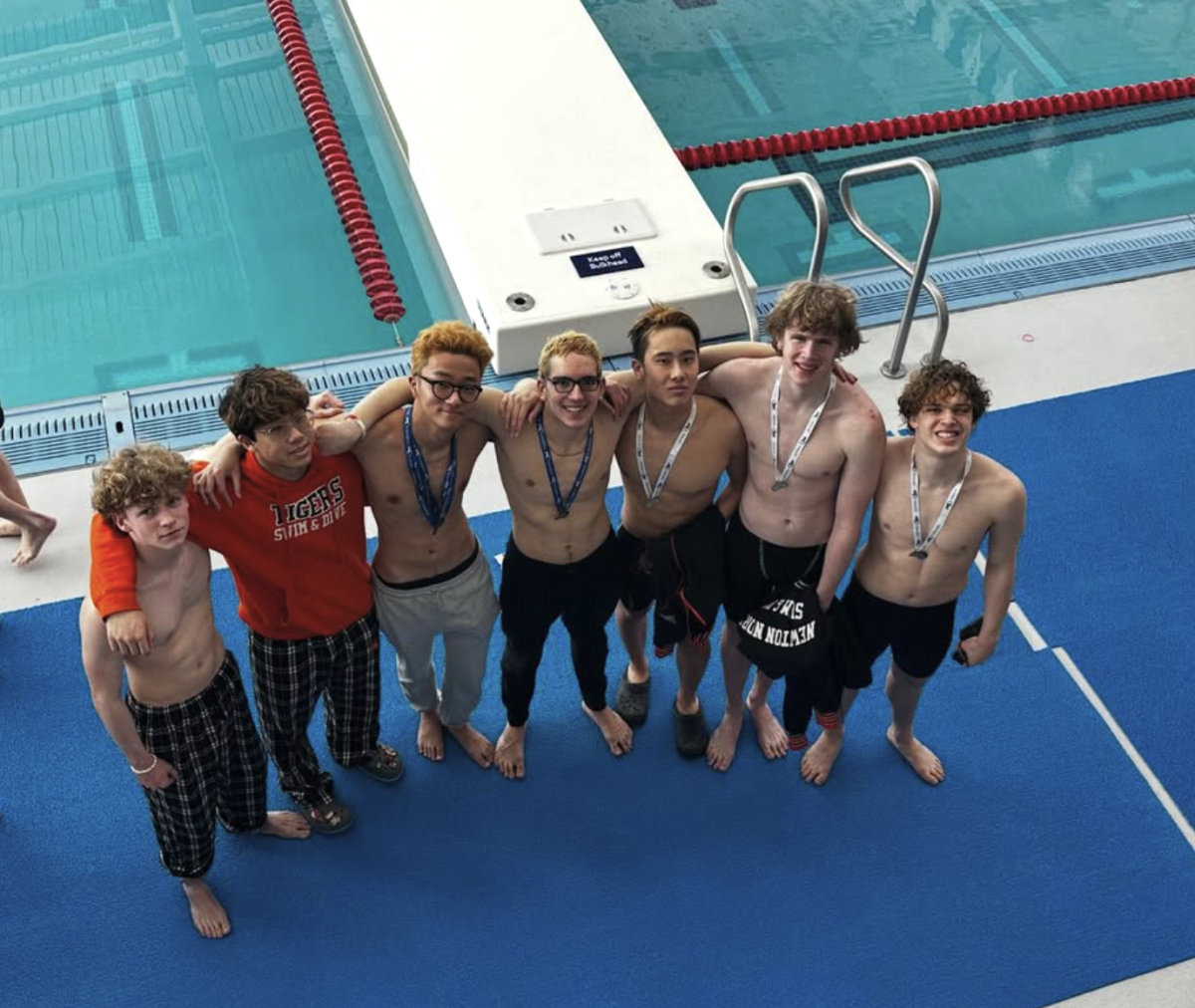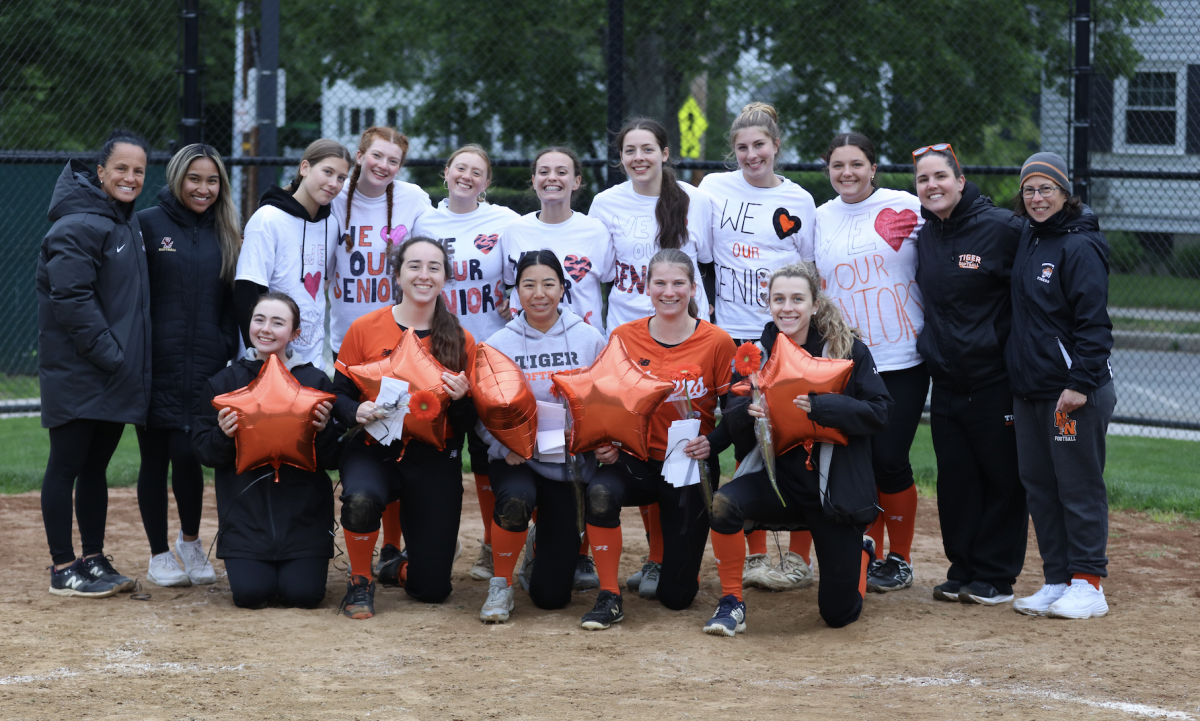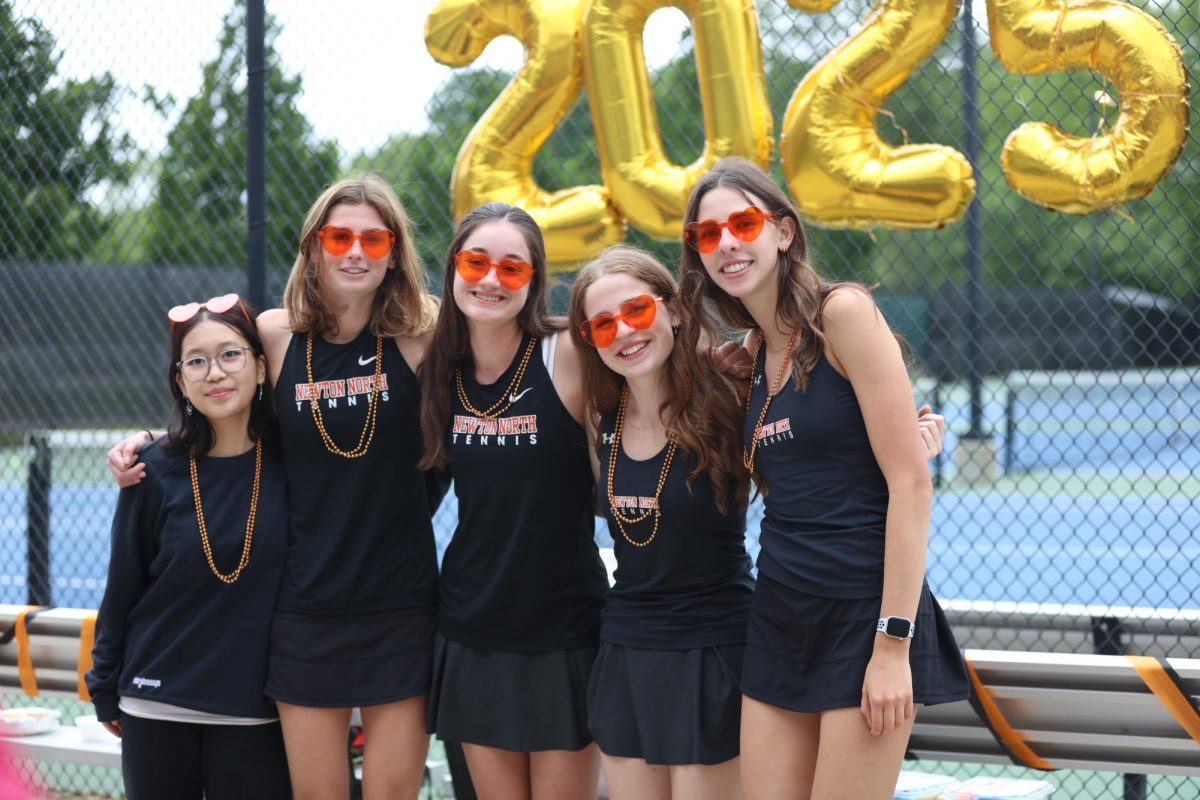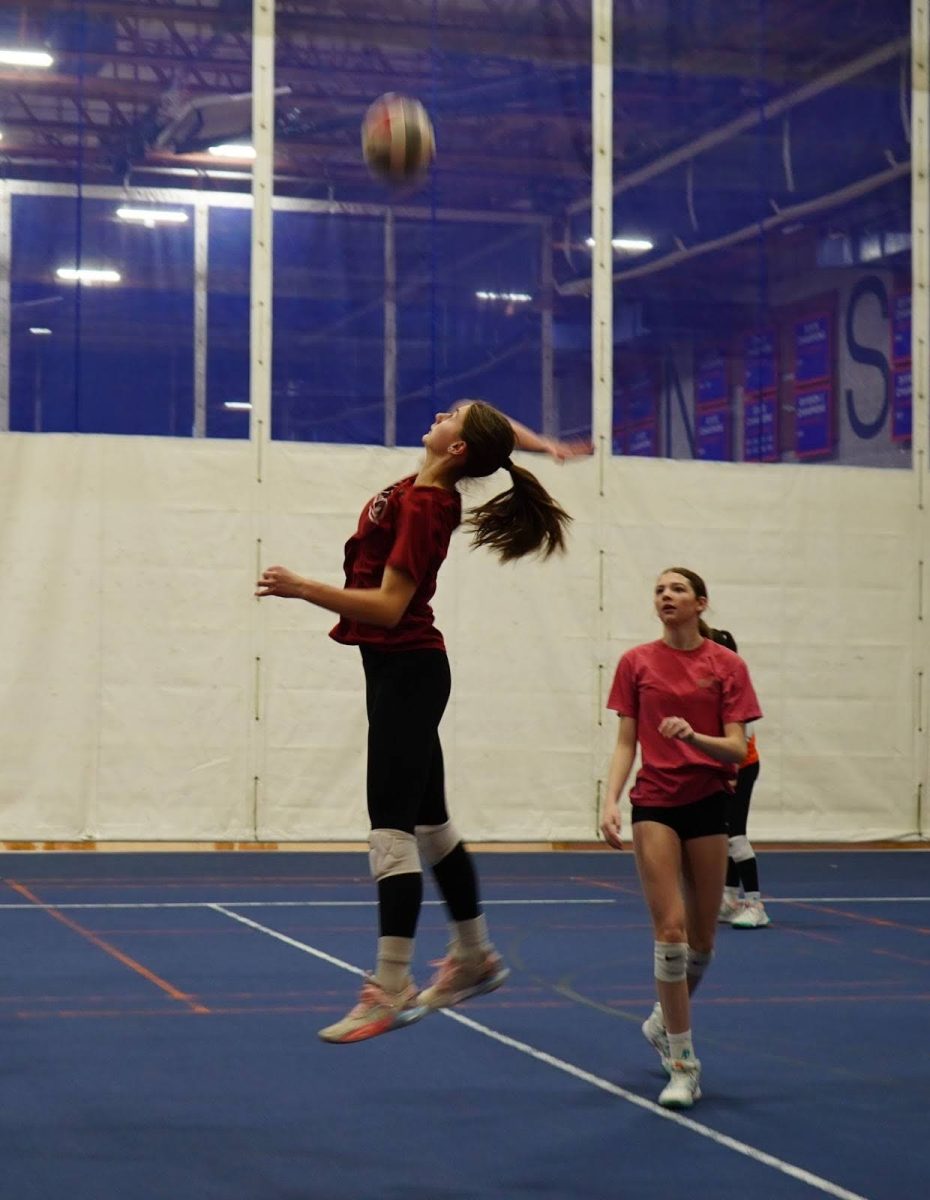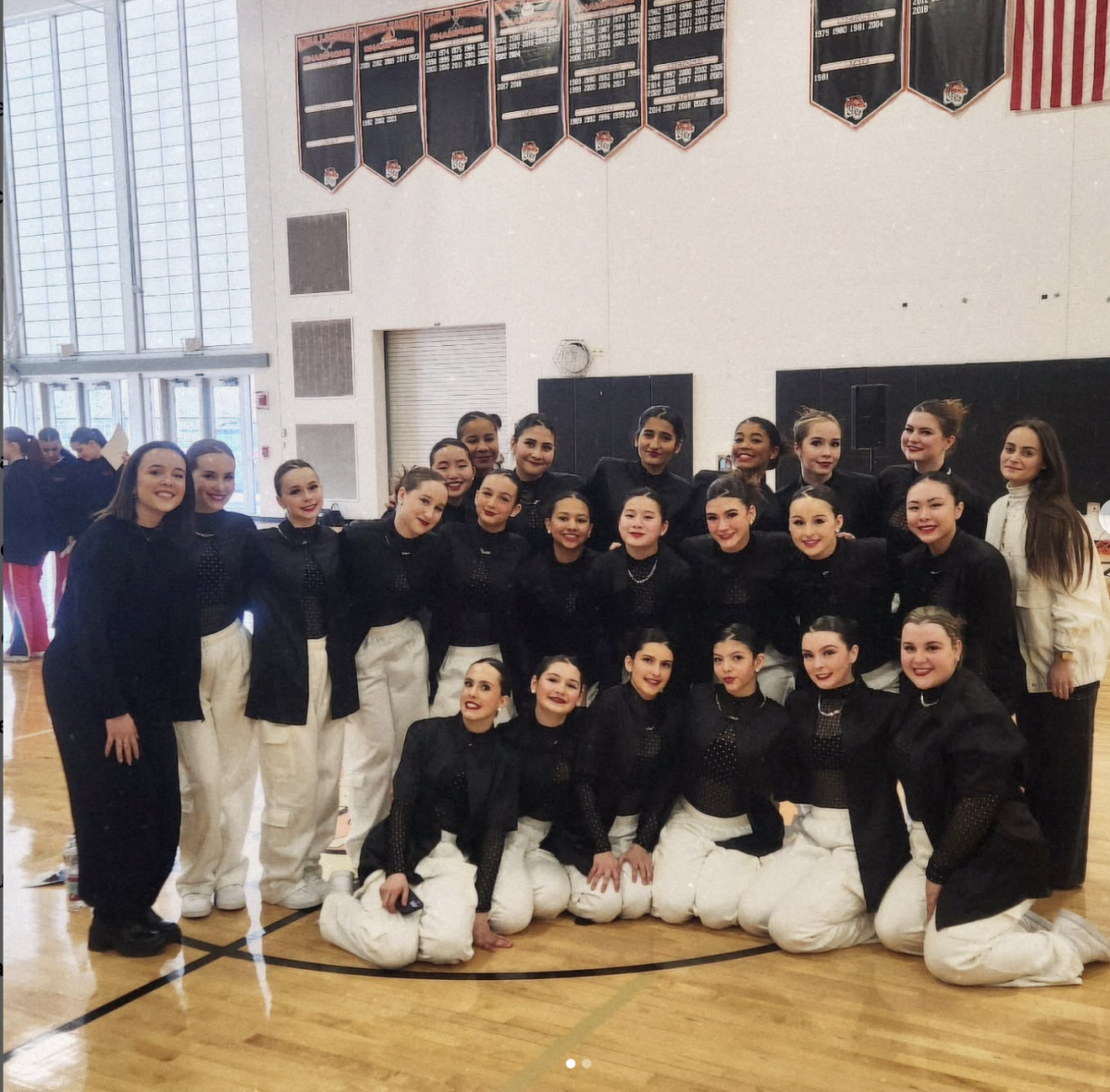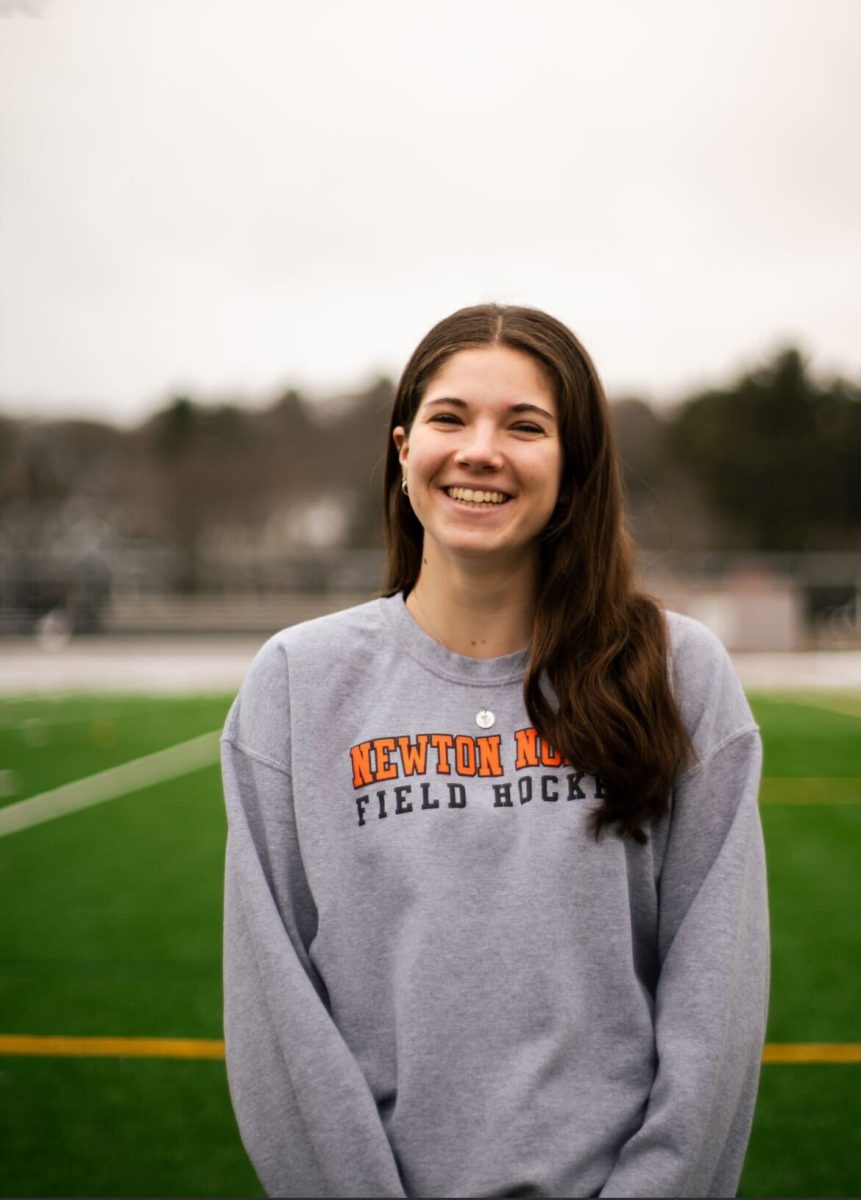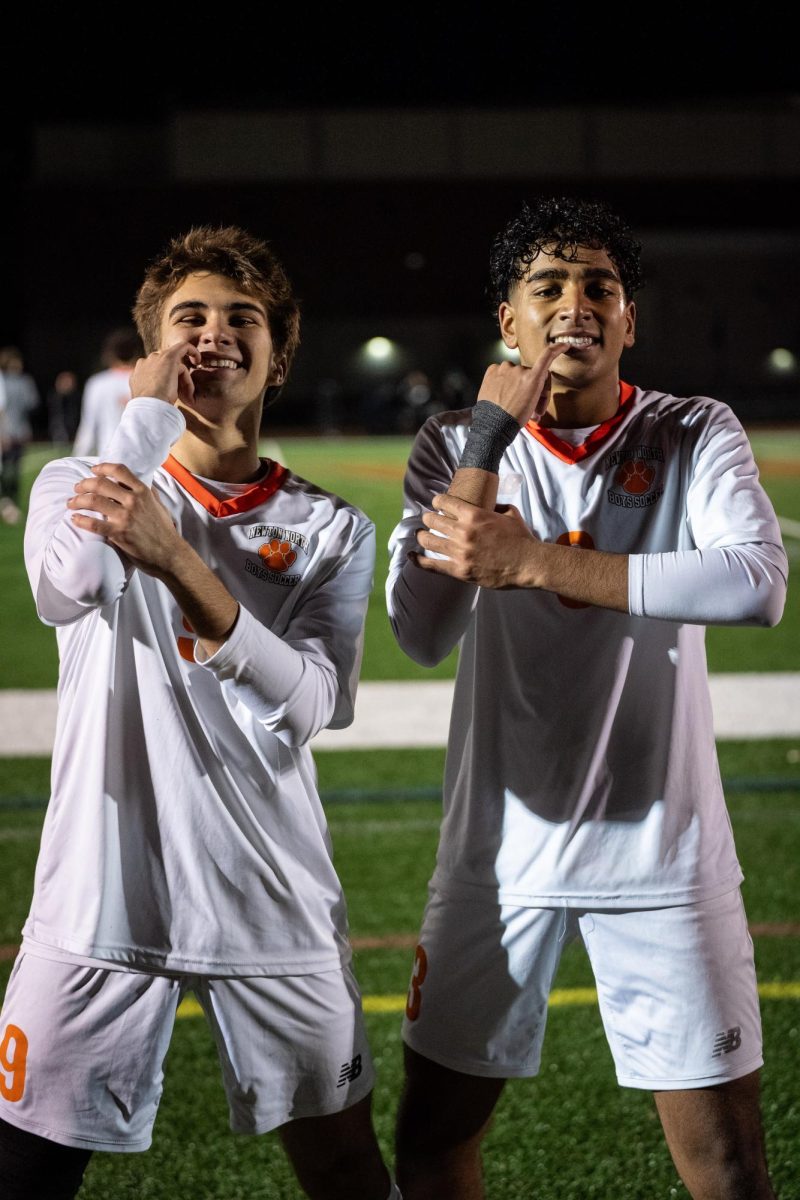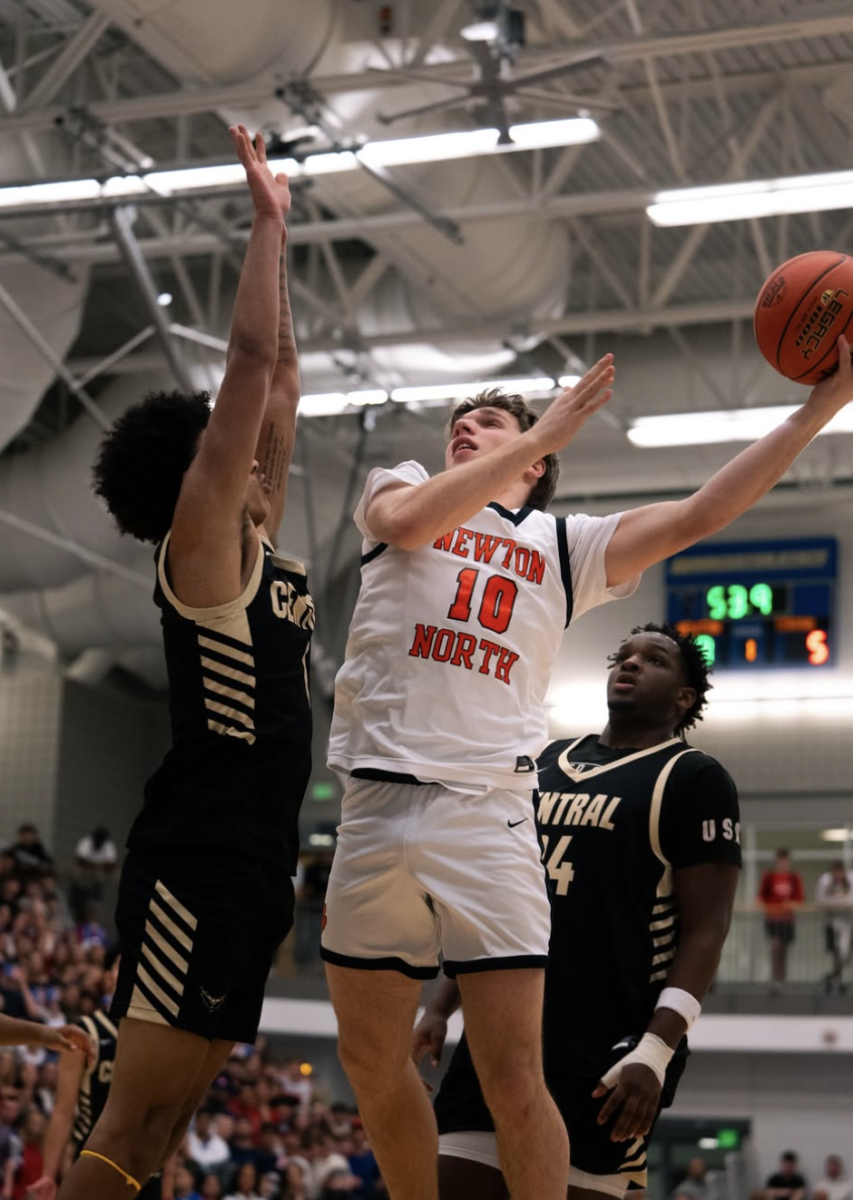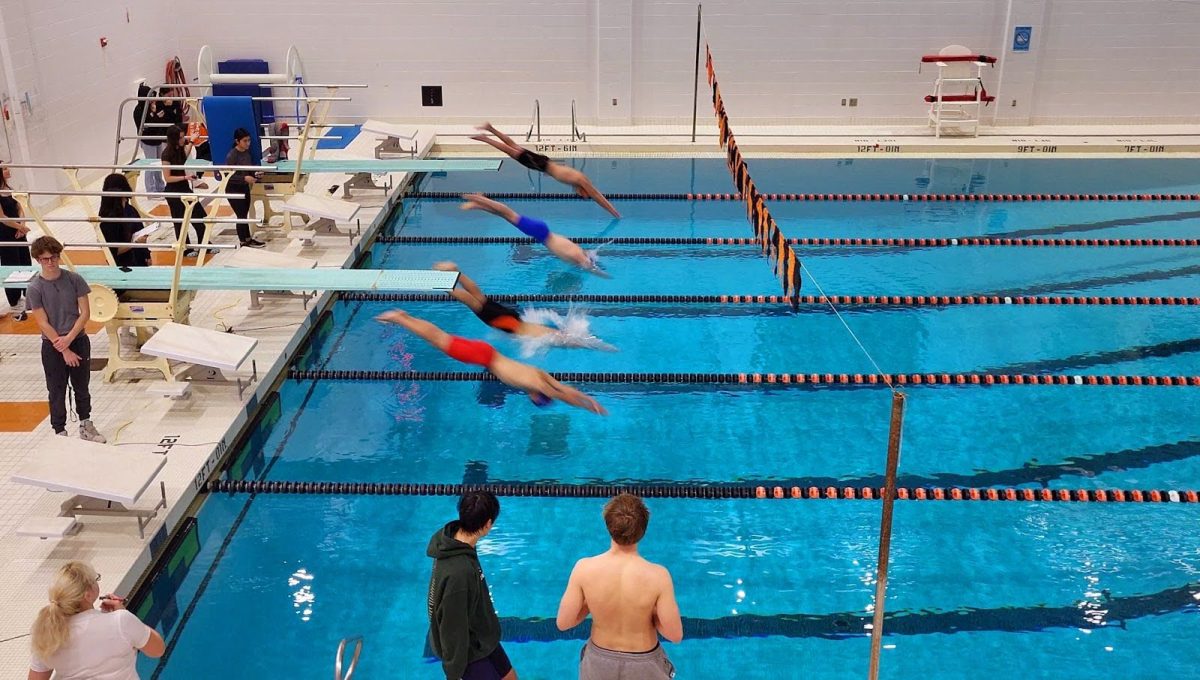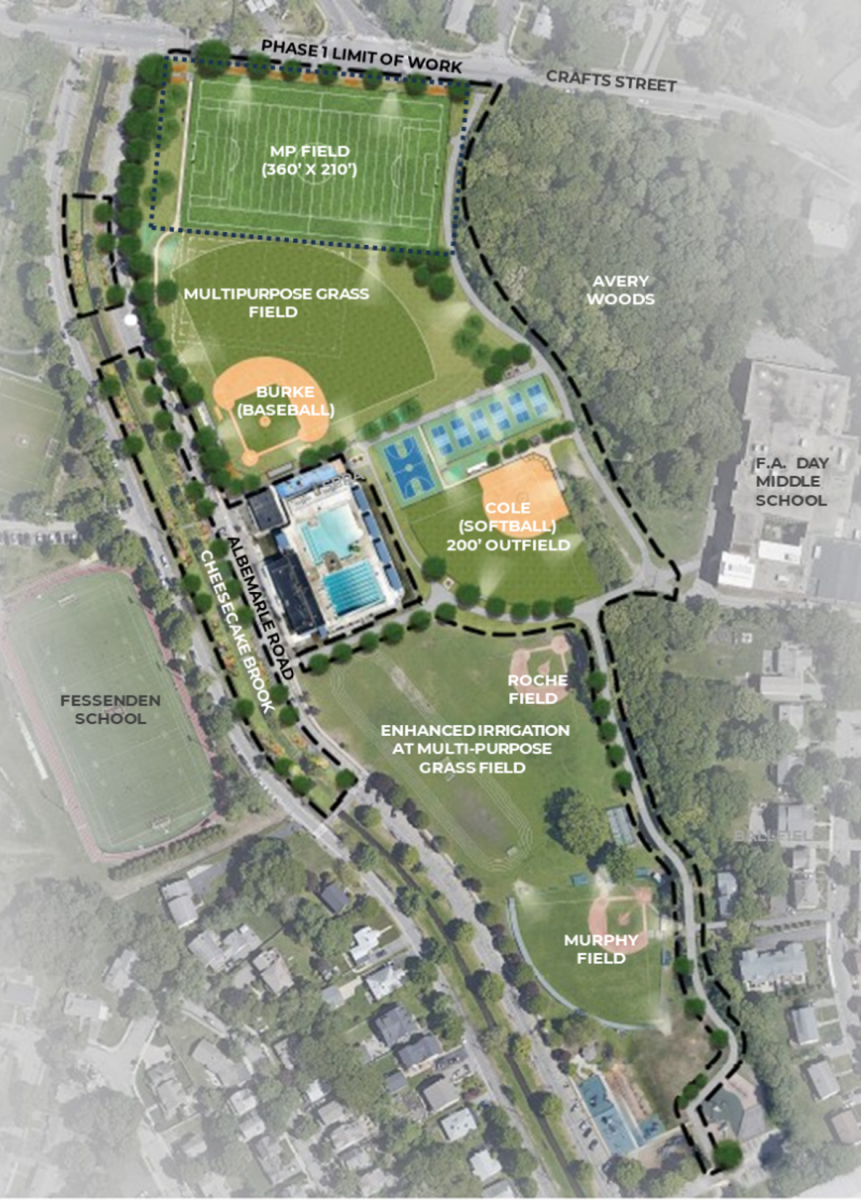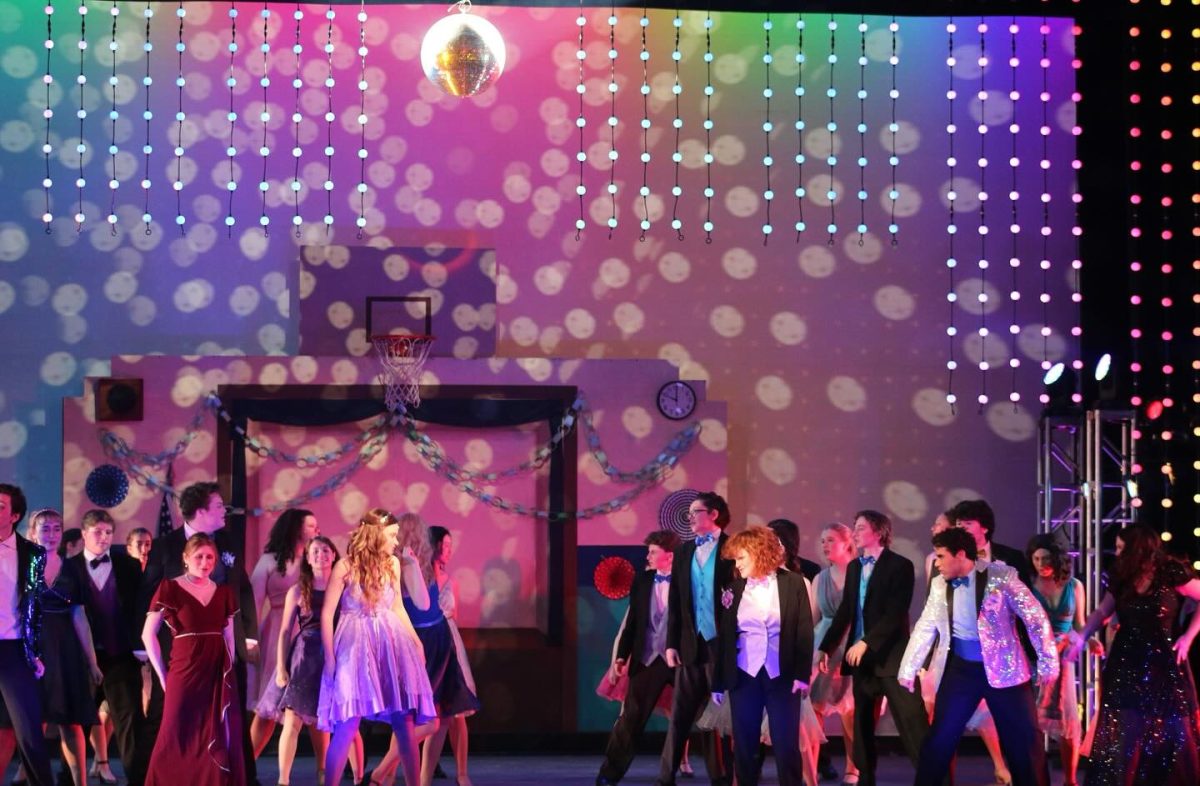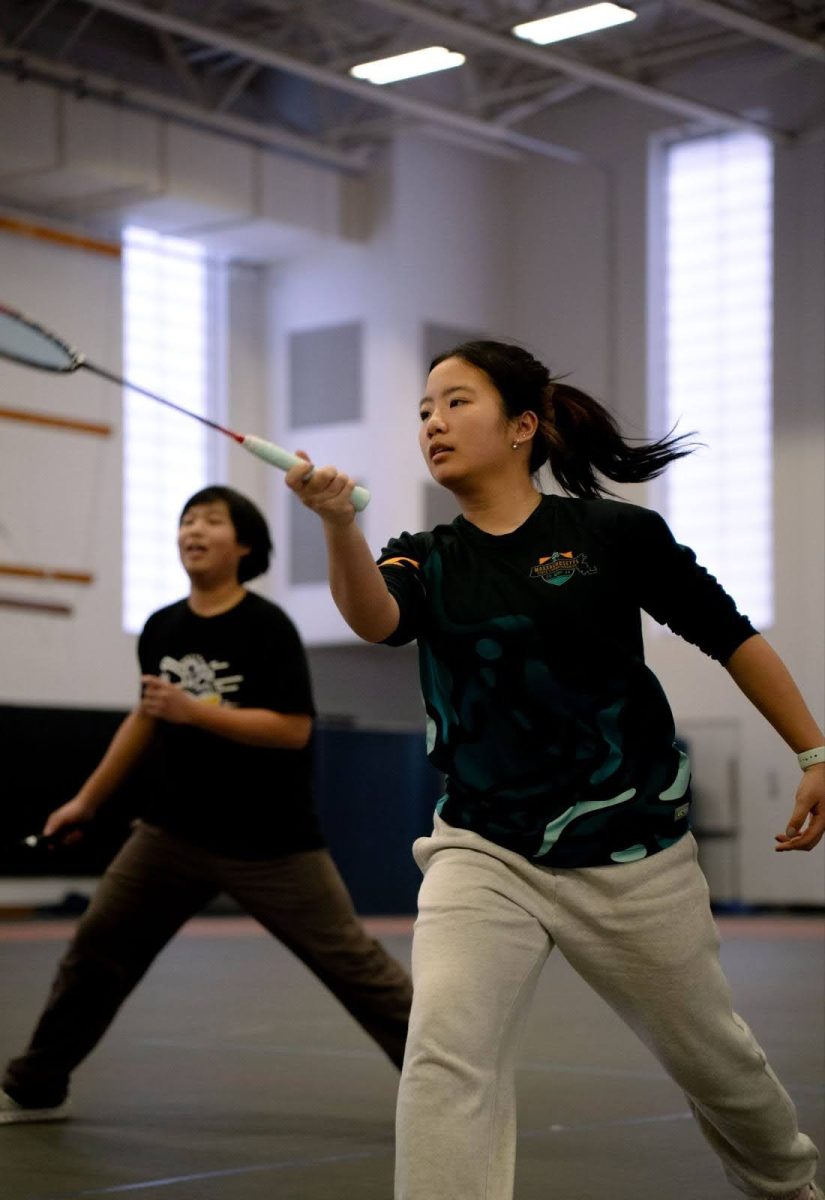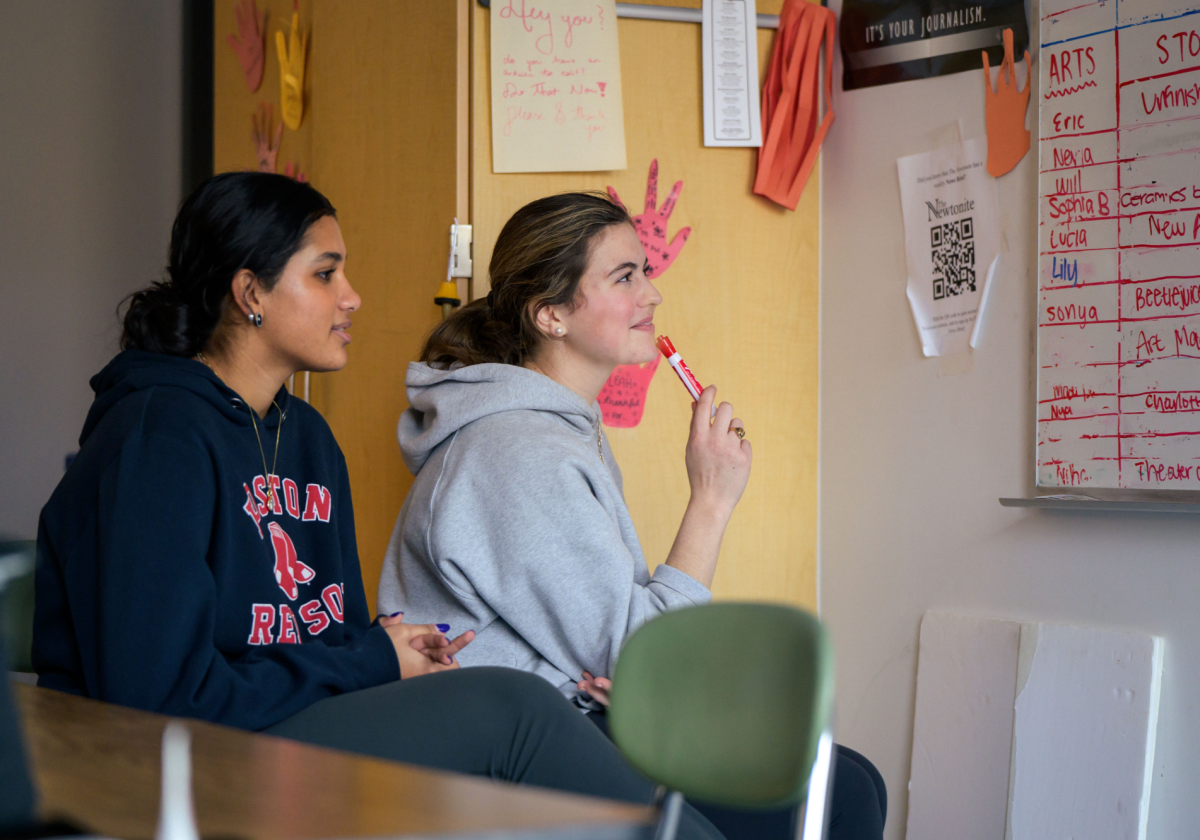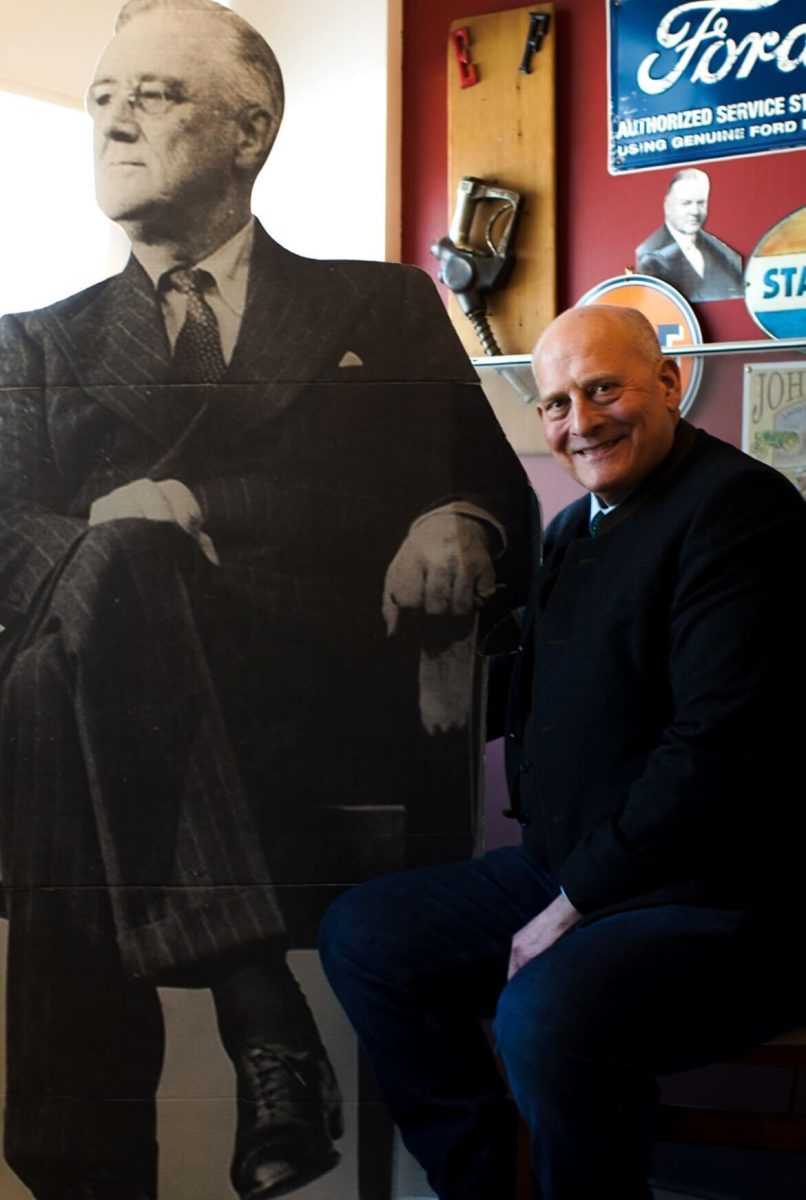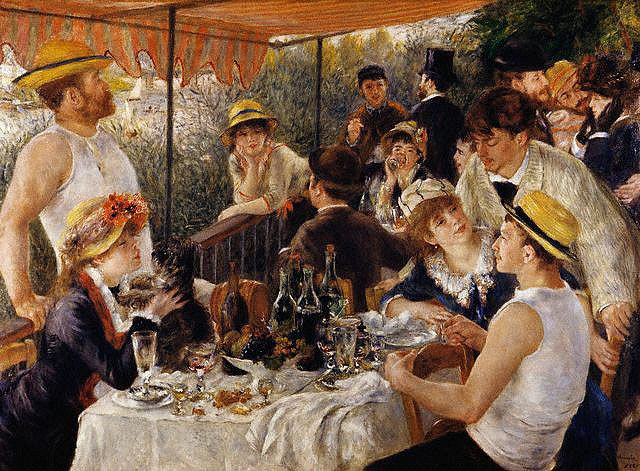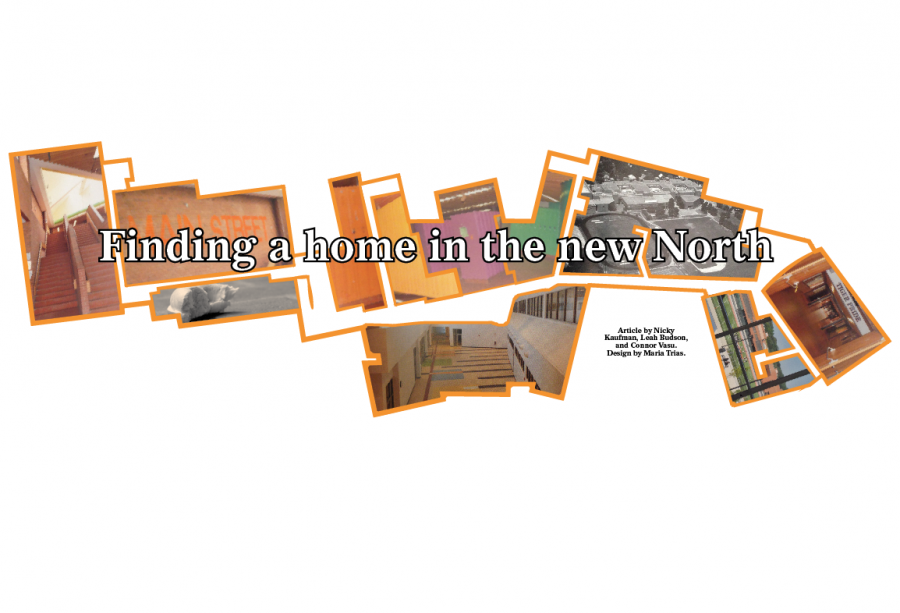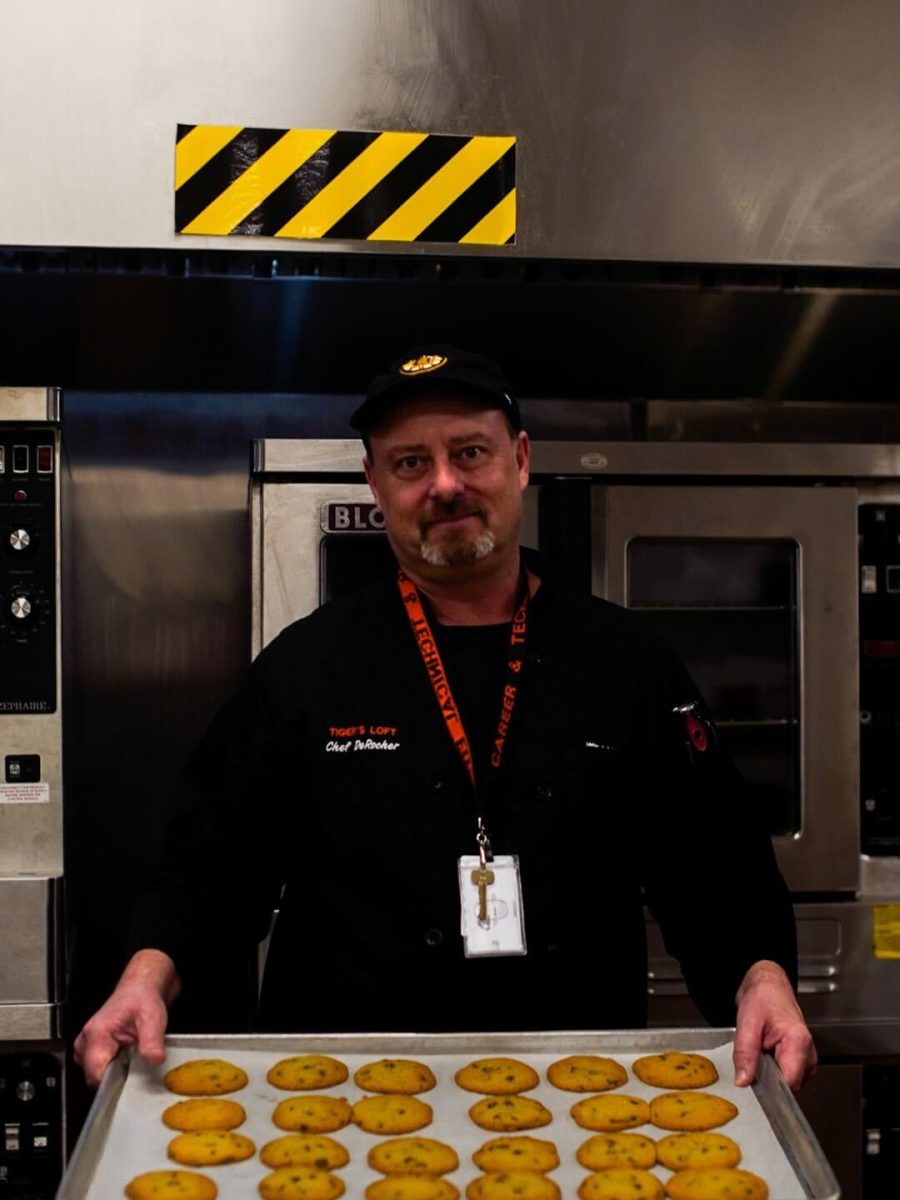by Nicky Kaufman, Leah Budson, and Connor Vasu
Silence in the Library
It is D-block on a Monday and the Library Learning Commons is bustling with activity. Some students are chatting about the weekend while others are frantically finishing G-block’s homework. Computer Lab A is filled with a freshman history class hearing about all the resources the library has to offer and outside it juniors are quizzing each other for the next biology test.
A few scattered students sit trying to sneak in a couple bites of food before lunch block, despite the signs clearly prohibiting food in the library.
Senior Jack Goodman was one of these students, but he was kicked out of the library once again; this time for eating his lunch.
“This feels a little ridiculous. I mean, I get that it’s a library, but I just want to eat and hang out with my friends,” he said.
After four years in the new school, a trend has emerged in student conversations surrounding the use of the library and the rest of the building. Because of the lack of a viable hang out spot and the recent enforcement of a rule banning food outside the cafeteria, students are struggling to find places where they are allowed to simply relax with their friends.
When asked about the existence of a social area, principal Jennifer Price said, “Kids now go to the library, or the cafeteria, to hang out.”
In some ways, students have adopted the library as their own by using it as a space to relax while not doing work. However, not all librarians and administrators are on board with this shift.
Price said that students should be allowed to hang out there, “as long as they are quiet and respectful of the fact that many of their classmates need a space to work.”
As for allowing food in the library, Price clarified, “It is not designed to be a space to eat. We would never install a carpet in an eating space in a school.”
[polldaddy poll=8144946]
The library of the old building was larger and less of a social area than the library in this school, according to librarian Annette Tate. This influx of students looking to socialize is not necessarily a good thing, she said, considering how it disrupts students who are trying to get work done.
The decision to label this school’s library as a Library Learning Commons rather than just a library, however, was a conscious one. The space was intended to be more collaborative, while still committed to schoolwork and not socializing.
Former librarian and English teacher Kevin McGrath, who was involved in the design of the Library Learning Commons, said, “The name change was meant to reflect the changes in the way the school library operates. School libraries used to be warehouses of books and information. The difference in a learning commons is it’s centered around people.
“The Library Learning Commons is focused on knowledge creation, rather than knowledge storage.”
This change would ideally result in a higher noise level tolerance, but seeing as many students are not discussing schoolwork, the librarians have begun to crack down on students who are being unproductive.
Senior Ryan Kiel-Zabel noted, “The librarians are really strict sometimes. Kids get in trouble all the time for talking, laughing, and just hanging out.”
However, despite student complaints, Tate said that she is just following school rules. She explained that the administration put forth “rules for not just the library, but the whole school,” which prohibit various student activities, such as eating food outside the cafeteria. Tate said that these rules are not always followed in the library.
Beals housemaster Michelle Stauss condones students being in the library during free blocks as long as they “maintain a volume level that is conducive for various types of school work.”
However, Tate said she feels that as the area has become a primary student hangout, she has often noticed students discussing non-school related subjects. “Although we want this to be a learning environment, and I am happy to see kids enjoying the space, too often I overhear loud kids discussing non-academic stuff such as their most recent party and how drunk they got last weekend. As a librarian, I don’t want to hear that,” she said.
Junior Eric Chen, interviewed last year as a sophomore, said he agrees with Tate. “There are often noisy and distracting juniors and seniors in the library,” he said, pointing out that these students often group together and take up many tables, making it difficult for underclassmen to find places to work.
Senior Danielle deBairos echoed Chen’s sentiment, saying, “on occasion, there are very large loud groups in the library which can be disruptive, so I do understand the librarians trying to quiet down some students.”
However, deBairos also said that “the library should be used as an area to relax and hang out with friends” in addition to studying. Furthermore, although she acknowledged the sanitation issues with having food in the library, she said sometimes there is no other option. “There have been many times when I needed to use a computer during lunch and had to wait until the end of the day to eat.”
Nonetheless, librarian Erin Dalbec said that students eating food in the library has become a major issue. She confirmed rumors of rodents in the library dating back to February or March of last school year.
Despite this reality, many students, like Goodman, still find that the library is one of the only places they can go to relax with their friends. “All the people I want to hang out with are in there and I’m out here,” says Goodman, while standing outside the library still clutching his lunch. “I get what they’re mad about, it’s understandable, but it’s bad for me. Honestly, where am I supposed to go?”
The Student Union
Tucked away in a corner of the cafeteria beside the College and Career Center, five upperclassmen huddle around a TV playing Super Smash Bros. Brawl. Nearby, a foosball table and air hockey game lie unused next to empty bar stools and tables. The Student Union, intended by the administration and Student Faculty Administration to be a prominent social area, is instead almost always deserted.
Principal Jennifer Price explained, “The SFA has worked hard to create a hang out space for students in the Student Union. We truly hope students use it as such.”
History teacher and former Student Faculty Administration head Gregory Drake also referenced the Student Union as being a potential student hangout. “I know that they put in stools and other things to make it a place where kids could be,” he said.
History and social sciences teacher Ty Vignone said he helped lead major pushes to create a student center in the new school, including the creation of the Student Union.
“We asked if we could put benches in the hallway and the administration said no. We tried to allow kids to eat out there, and they said no. We’ve tried to create new hangout areas, such as in the cafeteria, and anyone can see that they aren’t anywhere near to what [they were at the old school].”
In fact, the vast majority of students have never heard of the Student Union, according to a Newtonite poll.
[polldaddy poll=8144849]
Even among teachers, this area is not well-known. English teacher Nick Grant said, “There’s a student hangout in the cafeteria? That’s news to me.”
In fact, senior Alex Klavens, an SFA member, admits that the Student Union is “still a work in progress” that is used mostly by underclassmen. Therefore, he said that, for students, the library is “the only real on-campus option.”
Upperclassmen seem reluctant to visit an area where they were required to stay before earning off-campus privileges, as freshmen and sophomores must remain in the cafeteria during cancelled classes.
“I’m not a freshman anymore,” said senior Lucas Radouch. “Why would I want to go back to the cafeteria and get hounded by campus aides while playing Mario Kart?”
Where do we go now?
In all the student interviews conducted for this article, the resounding message was that no one knows where to go. With the Student Union not providing a viable hang out spot and librarians more strictly enforcing rules in the library, many students are finding themselves searching for a spot to socialize and eat lunch.
The expectation that students will only eat in the cafeteria is unrealistic, and school policy does not reflect this reality. According to a poll conducted by the Newtonite, only 48 percent of students eat in the cafeteria. Instead, 20 percent eat in Newtonville and 20 percent eat in extracurricular spaces, such as the art and theatre wings. The other 12 percent eat in the hallway, the library, or the Tiger’s Loft.
Although students leaving the cafeteria with food are often told to turn around, students bringing food to school or finding an alternate route to leave the cafeteria receive little trouble from teachers for eating lunch in spaces such as the art, graphics, and theatre wings. In fact, many extracurricular teachers encourage a community where food is allowed.
Graphics teacher Jon Paul Conopka said, “I’ve seen students who had no friends to sit with in the cafeteria make friends in the back of our room during lunch and then start going to the cafeteria with the people they met. If having lunch here makes a student’s day just a little better, then I’m okay with it.”
Even the administration encourages eating food in rooms when it buys munchkins for classrooms during anti-bullying days. Homerooms and classes alike regularly have “breakfast days” where students or teachers bring in food.
In addition, some students will have meetings with a teacher during lunch, and although the teacher often allows them to bring food, housemasters and campus aides will prevent them from leaving the cafeteria with something to eat.
[polldaddy poll=8144924]
However, head custodian Tim Keefe said the no-food policy is important to keeping the school clean. “The old school had major issues with students being dirty and leaving trash around. Now we have this brand new beautiful school with great facilities, and I’d hate to see it mistreated by students.”
Restricting food outside the cafeteria is both extremely difficult to regulate and limits students in their ability to find a home in the school, which is something the school encourages.
Senior Lucy Beizer said the graphics community “has gotten very close because of the amount of time people spend in the [graphics] rooms.” Beizer said she benefitted from eating in the graphics room instead of the cafeteria and even made new friends.
The fact that students who bring lunch to school are not prevented from eating in extracurricular spaces makes the administrations’ policy inconsistent and ineffective. Junior Ellie Strayer, who often eats lunch in the theatre area, said that, “The annoying cafeteria patrol, who obviously feel they are fixing the mice problem, have a flawed plan that is probably not putting a dent into the mice inhabitants.”
Strayer noted that in the midst of a stressful school day, she is thankful for “being able to eat in peaceful, uninterrupted areas with friends away from the chaotic cafeteria.”
Disagreements about policies regarding a social area continue to delay a solution. However, it is clear that teachers, students, and administrators want the same thing—a clean, comfortable space for students to pass time in.
The Old Main Street
When the new high school opened its doors in 2010, students were introduced to a $197.5 million state-of-the art building, complete with new athletic facilities, an auto shop, and interactive whiteboards in most classrooms.
“It was so shiny and new, I felt like I was entering a set for a TV show,” said senior Ryan Kiel-Zabel.
However, through new rules and regulations, the new school lacked what was an iconic fixture in the old building.
“Main Street disappeared,” said history and social sciences teacher Ty Vignone, who has worked at this school for almost 50 years. “What was such a focal point of the old school’s culture was suddenly gone.”
In the old building, Main Street was a hallway spanning the length of the school that served as a popular student hangout during lunches and throughout the day.
Principal Jennifer Price said that this building has a new “vibe,” which has made Main Street less necessary.
“I think this school doesn’t flow the same,” Price said, commenting on how the old Main Street had student lockers up and down it and had much more traffic than any area in the new school.
“I used to know where to find my students based on their carved out spots on Main Street,” said science teacher Jodie Cohen.
[polldaddy poll=8149360]
“Main Street was the place to be,” said Jeremy Marks ’12. “If my friends and I got out of class early, we’d hang out on Main Street. If we didn’t want to eat in the cafeteria, we’d eat with everyone on Main Street.”
According to both Vignone and English teacher Peter Goddard, students and faculty communicated to the architects of the new building the need for a Main Street-type area in the new school, only to be disappointed when administrators did not allow students to eat in the hallways and refused to let benches and chairs be placed there.
“I felt like it would be wonderful if the Main Street culture remained the same in the new school,” said Goddard. “I loved it, it was like a fun barnyard where everyone was.”
Over four years later, the hallway that runs from the front doors to Beals house, the area Vignone designates as where the new Main Street was intended to be, remains devoid of students and teachers most of the time.
The administration played a role in the failure of Main Street at the new school, according Goddard, Vignone, and some students.
“Suddenly there were new rules implemented, such as, ‘No eating in the halls,’ which later evolved into, ‘No sitting in the halls between class,’” said Marks of his experience in the new school, in which he spent two years. “I felt I was walking through a hospital instead of a high school,” he said.
However, Barry housemaster Aaron Sanders said the administration wanted to create a school with its “own culture and personality,” and that the creation of a Main Street was less of a focus.
Furthermore, head custodian Tim Keefe said he feels that students in the old school did not keep Main Street clean. “I’m not just talking about kids leaving trash around, we were dealing with serious stuff, like students leaving graffiti all over the walls,” he said. This made Keefe’s job increasingly difficult.
History teacher Brian Goeselt agreed that students struggled with cleanliness, saying that trash was “a huge problem,” and that Main Street “generally looked disgusting after lunch.”
Because of the way students treated the old Main Street, Keefe said he feels the elimination of it in this school is “absolutely fine,” and although students do not have as many hangout options, he feels that by not having so many students concentrated in one hallway, they now treat this school with more respect.
Goeselt also sees the benefits of a clean Main Street. “A clean Main Street sends a message that this is a safe and civil environment for learning,” he said.
Despite saying that the new hangout areas in this school don’t compare to the old school, Vignone remains optimistic for the creation of a Main Street-type area. He said that as the school develops, its culture will also develop, which will lead to kids being more comfortable in creating a Main Street by themselves. “This school echoes culture and acceptance. These kids are resilient and I would find it hard to believe that [they] wouldn’t make their own hangout.”
Goddard also was enthusiastic about the idea of a Main Street-type area in this school, saying that the architectural changes in the new school could allow for changes in Main Street’s appearance. “In the old school they used to have these trees for every house up and down Main Street, but they were always kept trimmed and short because the ceilings were so low. Could you imagine how big those trees would be on the new Main Street?” he mused.
Vignone stressed that the creation of a Main Street must come from this school’s students.
“The last kids to go to the old building and know what Main Street is like have graduated,” Vignone said. “That means that it is now up to the current students to create their own culture. You need to see them asserting themselves and saying, ‘This is my school too.’”


